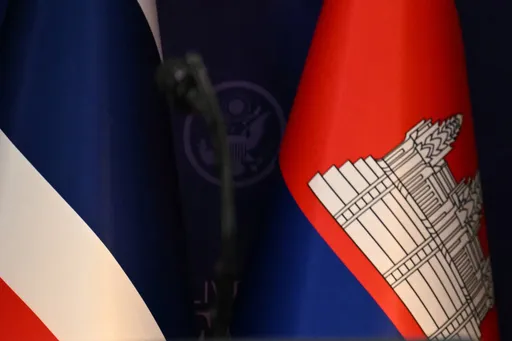More than 40 million people were trapped as slaves last year in forced labour and forced marriages, a joint report by key international rights groups revealed on Tuesday.
The International Labour Organization (ILO), the Walk Free Foundation, and the International Organization for Migration (IOM) added that this number was a conservative estimate.
Modern slavery
The term “modern slavery” has not been defined by any international instrument. But it is widely used as an umbrella term to describe various forms of coercion prohibited in international instruments on human rights and labour standards.
These include human trafficking, forced labour, debt bondage, sex trafficking, forced marriage and other slave-like exploitation.
Forced labour
Forced labour refers to situations in which people are forced to work, usually for no or inadequate payment, as a result of violence or intimidation.
An estimated 24.9 million people were trapped working in factories, on construction sites, farms and fishing boats, and as domestic or sex workers, the report said.
Half of them were victims of debt bondage—people made to work to repay a debt or other obligation.
Child labour
The ILO also released a separate report showing 152 million children were victims of child labor, which amounted to nearly one in every 10 children worldwide with almost half of them engaged in hazardous work.
More than two-thirds of these children were working on a family farm or in a family business, with 71 percent overall working in agriculture.
Forced marriage
Forced marriage refers to situations in which people, usually girls and women, are married without their consent and forced into sexual and domestic servitude.
The report found that around 15.4 million people were in marriages to which they had not consented.
Many of them were taken from their homes, raped, and treated like property that could sometimes be bought, sold or passed on as inheritance, said Fiona David, executive director of global research at Australia-based Walk Free.
“Really the label 'marriage' is actually a little bit misleading. When you look at what’s behind it, it could also be called sexual slavery,” David said.
The report found more than a third of the 15 million victims of forced marriage were aged under 18 when wed, and nearly half of those were younger than 15. Nearly all were female.
First such collaboration
The findings mark the first time the groups collaborated on an international estimate and prompted calls for stronger labor rights, improved governance of migrants, action to address root causes of debt bondage, and better victim identification.
“Given that a large share of modern slavery can be traced to migration, improved migration governance is vitally important to preventing forced labor and protecting victims,” they said.
The latest report follows a 2016 Walk Free finding that 45.8 million people were slaves and an ILO figure of 21 million in forced labour.
But Houtan Homayounpour, a specialist on forced labour at the ILO, cautioned the newer numbers cannot be used to show progress or failure in anti-slavery efforts.
Previously the groups had used different data, definitions and methodologies, he said.
Click here to read the full report.
























